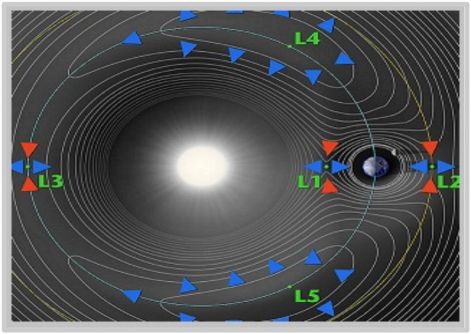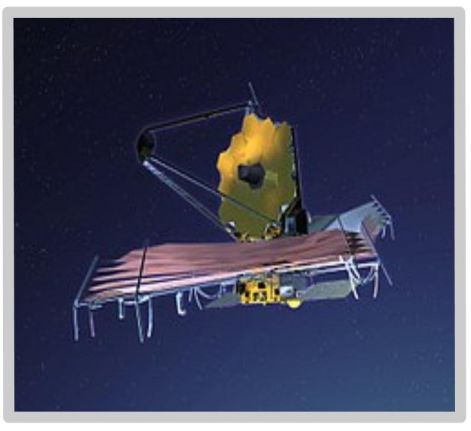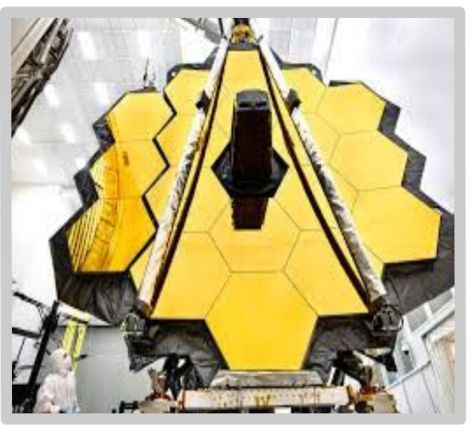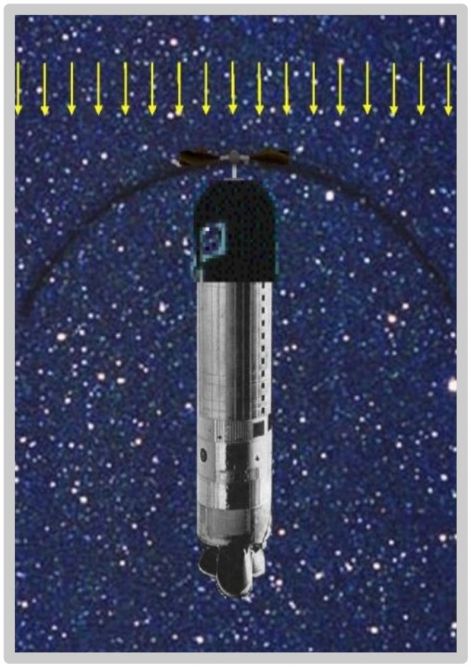The reactivated AETHER
Ide írhatod maximum 250 karakter hosszúságban a honlap leírását ill. szlogenjét. A leírás fontos a weboldal látogatottá tételében, ezért érdemes jól megszövegezni.
The L1 is our salvation
or
Lagrange points in the Sun-Earth system
"A stable orbit relative to Earth is favourable for many satellites, which are placed in orbits around the Lagrange points of the Sun-Earth system (de Lissajous orbits or fish orbits).
The L1, L2 and L3 points are unstable, the body at this point can only stay there for a short time, and is easily pushed out by environmental disturbances (gravitational effects of other bodies, solar wind, etc.), and then it moves into a Lissajous orbit.
So far, 10 spacecraft motions have been planned to include the motion in the vicinity of the L1 and L2 Lagrange points of the Sun-Earth system. Most recently, the two US GRAIL spacecraft and the Chinese Chang'e-2 spacecraft have been in the vicinity of the L points of the Sun-Earth system.
The James Webb space telescope is scheduled to reach the vicinity of the L2 point of the Sun-Earth system in the spring of 2022, where it will orbit around the Sun-Earth axis.[1] [Wikipedia]"
The Earth orbits the Sun in one year. However, as it orbits, it is surrounded by 5 quasi-stable points that orbit with the Earth and form a geometrically constant shape. The points are marked and numbered with the initials of the Italian-French mathematician and astronomer Lagrange. Three of these points - L1, L2, and L3 - are gravitationally quasi-stable, while L4 and L5 are more orbitally stable.


Figure 1 The 5 Lagrange points in the Sun-Earth system
The L2 point is located on the Sun-Earth axis, 1.5 million km from Earth. It is located in the shadow of the Earth, outside the Sun's rays, and is marked in blue in the text. This point was previously used by 2 astronomical spacecraft but is now empty. It is currently (spring 2022) the most topical Lagrangian point, as it will soon be the site of the long-awaited James Web infrared space telescope. Its sensitivity will be a hundred times better than the previous Hubble. However, the disturbances will also require the continued use of small stabilization rockets.


(Figure 3) The assembled giant telescope ( Figure 2.) The giant mirror of the James Web space telescope.
The L1 point is between the Sun and Earth, 1.5 million km from Earth. It is permanently exposed to the sun, so we have colored it yellow. This point may be of vital importance to mankind, because by placing a cloud of dust here, the strength of the sun's rays can be reduced, thus reversing the process of global warming. Two valuable space probes are currently located there, whose operations could be disrupted by the dust, but the survival of mankind is more important.
The L1 point in a prominent role!
If you sprinkle dust here, it will partially block the sun's rays, reducing the Earth's heat load. If we get the amount of dust right, the Earth will cool back to its previous normal temperature, global warming will cease, and weather anomalies will probably disappear.
The dust can be picked up by space rockets, and exporting it should not be a problem, as there are already a large number of space probes up in space. We are even preparing to fly to the Moon again, and to Mars, which orbits much further away. The amount of dust required is relatively small, I estimate it at about 100 tonnes. Before that, it is worth doing a test launch and observing and analyzing the dispersion of 1 tonne of dust. The material of the dust could be anything, but it might be worth using white powder of low density: sliding powder, chalk dust, baby rocking dust, etc.
The soot from chimneys would be very suitable for making a black cloud of dust. Very cheap material, good its grain size, although the black color is a bit of a problem. The black color is a problem for the Greens because the dust could fall back to the Earth's surface in a few years and reach the polar snowfields, causing melting. This is only of theoretical importance, as coal-fired power plants release and send up more soot into the stratosphere in a single day.
It's good to know that dust scattered in space is less likely to block the sun's rays with its surface. Rather, by touching the dust particles, the Sun's rays are deflected and thus avoid the Earth's surface. It takes only 2.3 arcseconds for the ray to be deflected enough to avoid the Earth. (Da = 12700/2/1500000 = 0.0042 radians)


(Figure 4) Positioning the dust shield at point L1
Global warming conferences, resolutions, and projects implemented so far are far from enough to stop the heat run, or at least to reduce the speed of the negative process. The dust shield proposed here will be a welcome exception to the current efforts. The result achieved depends solely on the amount of dust dispersed to stop the heating process or to restore the original temperature. However, if some special consideration arises, we can even reduce the Earth's temperature below the initial level.This is an excellent opportunity for science, space technology, and politicians, but it should be used.
This project can be completed very quickly, in just two years, which is not a big task for current space technology. Us Hungarians to propose the project, although we will not be implementing it. The costs should be covered by full international cooperation. In the meantime, a private company with experience in aerospace technology could come forward to take on the entire project. He will take credit for saving the living world of Earth and humanity from heat death.
Date: 2022. 02. 07.
Tom Tushey
Mechanical engineer
Hobby physicist
Scientific writer
Relativity-expert
reactivated-aether@c2.hu
Honlapkészítés ingyen:
Ez a weblapszerkesztő alkalmas
ingyen weboldal,
ingyen honlap készítés...
Mai: 22
Tegnapi: 15
Heti: 81
Havi: 312
Össz.: 19 996
Látogatottság növelés
The reactivated AETHER - © 2008 - 2026 - reactivated-aether.hupont.hu
